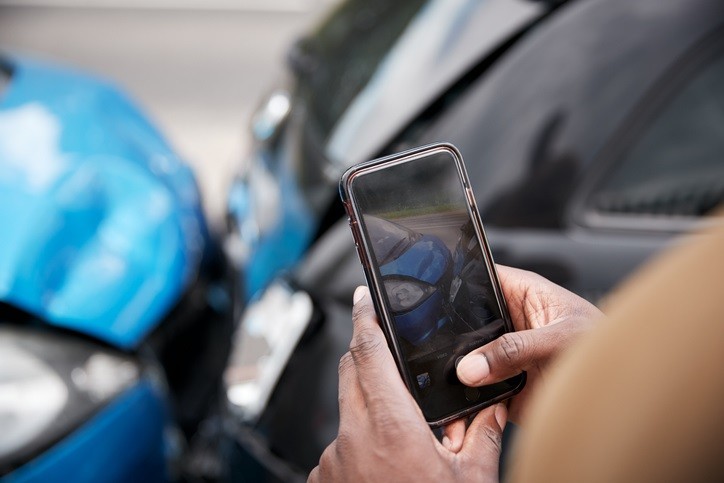Car accidents are often traumatic for those involved, and that can lead victims to forget important details surrounding the accident. Taking quality photos at the scene can help jog memories and be used as evidence when dealing with the insurance company or in a personal injury lawsuit. They can also help establish your credibility and prove that the other driver was at fault for the accident.
Photos and videos after a car accident are crucial in helping to frame the narrative of the accident. It is tough to dispute pictures or video of an accident scene.
If you were injured in a car accident, contact a car accident attorney at Eason & Tambornini today.

Photographs provide definite proof of property damage and visible injuries. However, most car accident injuries are not visible. Photos of the size of impact your car sustained can help substantiate that you are injured and is objective evidence of your pain.
For example, if photos show your car was severely damaged, then one can reasonably assume that you are actually hurt. However, photos do not always help your case if you were severely injured, but your car only sustained minor damage. You may have to fight the insurance company to show that you are hurt.
The minutes after a car accident can be a whirlwind, and you may not be thinking about what to take photos of and how important these photos can be to your case. The police usually quickly clear an accident scene, so you may need to move fast. It is essential that you try to take as many pictures of the scene as possible and from many different angles.
First, we recommend taking some photos from around 20 feet away or more to give a panoramic view of the scene. Try to show the position of the vehicles at the time of the accident. Document the location of any traffic lights or stop signs as well as reference points such as street signs. Include photographs of other potentially relevant information to the accident, such as the weather conditions.
Next, take some photos from about 10 or 15 feet away from the scene to show more detail but still give context. Photograph any skid marks or debris in the roadway. For example, glass from a broken window or a bumper that came off due to the impact. Document damage that occurred to any objects at the scene, such as street signs or trees.
Lastly, take more detailed and close up photos from around 1 to 5 feet away from the damage to the vehicles and try to include the license plates to verify the authenticity of the images. Take detailed photos of any paint transferred from impact or scratch marks on the vehicles. If you were visibly injured, take photographs at the scene and continue photographing the injury as you are recovering.
It may not be possible for you to take pictures at the scene of a car accident if you have been severely injured. If possible, have a fellow passenger or third-party witness take photos for you. However, your first priority should always be to receive treatment.
Do not put yourself in danger if it is not safe for you to take pictures at the scene of a car accident. Often, accidents occur on highways or busy streets, so it is not safe with heavy traffic around. You should never risk further injury by trying to take photos.
